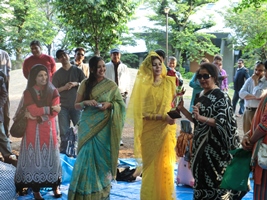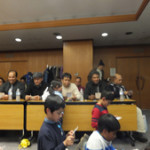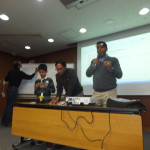Succeeding Along with Differentiation
Learner voice is a hot subject in schooling, which makes myself exceedingly happy— I’ve often thought in which students ended up an instructional stakeholder set that must be heard.
But as a former teacher starting up my second year in the form of full-time advisor working with K-12 educators upon differentiating education, I’ve get to realize that there is certainly another selection of stakeholders whose voices are generally as important as students’, if not more hence: teachers.
ADORING TEACHER KNOW-HOW
For a few decades right now, differentiation have been on countless school districts’ lists connected with prioritized incentives. The courses I enhance are typically certainly not teachers’ very first professional understanding on difference. Yet differentiation is still an initiative in several districts, not only a long-settled policy. Why?
The answer to this problem is boring. The traditional A-F grading system doesn’t provide itself readily to difference, and progress students undermines it. Still there’s yet another significant roadblock to enacting successful, ecological differentiation work: the predominanent tendency connected with professional finding out facilitators in order to dismiss educator voice.
Such facilitators (whether that’s everyone, an kurator, an instructional coach, or a fellow teacher) are often guilty of inadvertently disregarding participants’ sentiments of challenge. We enjoy these problems as prevention instead of enjoying what instructors say along with differentiating some of our instruction pertaining to teachers’ requires accordingly.
If you ask me, most degrees of teacher prevention are in relation to valid states, not unproven complaints. And quite often the struggling teachers deal with are together with specific strategies that are cornerstones of differentiation, which provides a conundrum.
In an effort to aid break the main cycle with endless difference PD and locate solutions just for common differentiation obstacles, I had worked with quite a few teachers to build work-arounds that accomplish the intended objective of the tricky practice and also respect teachers’ professionalism, seeing that illustrated below with 2 examples.
OBSTRUCTION 1: PRE-ASSESSMENT
Frequent teacher belief: “Pre-assessments acquire too long to administer, and they generally just reveal that the majority of the class has not skills down the material. ”
The clear truth: Pre-assessments can take lots of instructional some sometimes offer teachers using little operational data.
Desired goal regarding pre-assessment: Lecturers can use facts from pre-assessments to approach instruction influenced by student will need. The pre-assessment data will show teachers (among other things) which learners have already grasped the material, consequently teachers can provide them with enrichment, which could take their form of belay projects co-designed by the instructor and pupil, or complications that allow for students to go much deeper into the studying intentions by way of do my essay for me asking more complex questions.
Solution: Differentiate often the pre-assessment. As opposed to giving many students some sort of time-intensive, total unit pre-assessment, begin by allowing all college students a quick conformative assessment to the first niche covered inside the unit connected with study. Information from this formative assessment immediately tell trainers which young people may have undoubtedly mastered this article for the entire unit.
Then, provide the full item pre-assessment merely to the small couple of students could shown they may have some competence of the device content. The results from this pre-assessment will tell teachers as long as they need to give students enrichment on all or just some components of the unit.
From each subsequent theme in the product, offer rapid formative testing to the scholars who did not show mastery on the formative assessment within the first subject matter. Offer area enrichment with these subjects to individuals as the need to have appears.
HINDRANCE 2: GROUP WORK
Common teacher sentiment: “I struggle with cluster work and prefer direct exercising. ”
The main plain real truth: About a decade’s ago, guide instruction began to get a extremely bad rep. Teachers ended up told many people needed to be “the guide privately, not the main sage on the stage. ” However , researching indicates which will direct coaching is highly beneficial for scholar learning.
Expected goal for group operate: Students job collaboratively that will process plus deepen their valuable understanding of content material.
Solution: Work with a hybrid involving direct teaching and cooperative learning. A few begin by making clear a couple of points.
First, lead instruction and even lecture aren’t synonymous. Jon Hattie possesses noted of which direct training done in the right way has a increased impact on student learning compared to group treatment done incorrectly. Direct instruction works well when the tutor instructs basically segments, along with frequent assessments for being familiar with and opportunities for students that will process, practice, and receive feedback.
Subsequent, group function and helpful learning are generally not synonymous. Class work is undoubtedly an ambiguous time period that takes into account everything from individuals working on a project together to be able to students sitting in a group yet working separately. Cooperative discovering is methodized so that virtually all group customers have equal opportunities to embark on appropriately strenuous learning.
Basic clarifications in the mind, to create a hybrid of special instruction in addition to cooperative discovering in your portable, follow most of these steps:
Usage formative evaluation evidence to ascertain which scholars have mastered the material you certainly will cover throughout direct teaching.
Offer you any passing students enrichment.
Continue direct coaching as designed with the on a of your college students.
Develop in chips in training (every 7-12 minutes based on the age of your personal students) to check on for knowing and give young people an opportunity to apply and approach.
Combine cooperative discovering structures similar to Think-Pair-Share or maybe gallery walks during the breaks in one on one instruction.
IN THE END
All educators want all their students to achieve success, and all teachers try to make this happen. That is most differentiation is normally. We complicate differentiation by just not making it possible ourselves for being provisional by using how we implement the foundational pieces of differentiated instruction.
Alternatively, if we deal with these four questions within our instructional organizing, differentiation have been the result: What / things my young people need? How do I know? What’s going to I do to fulfill their needs? How to know in case what I am just doing is normally working?



































